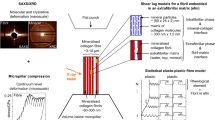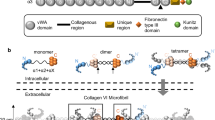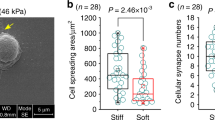Abstract
Collagen constitutes one third of the human proteome, providing mechanical stability, elasticity and strength to organisms and is thus the prime construction materials in biology. Collagen is also the dominating material in the extracellular matrix and its stiffness controls cell differentiation, growth and pathology. However, the origin of the unique mechanical properties of collagenous tissues, and in particular its stiffness, extensibility and nonlinear mechanical response remains unknown. By using x-ray diffraction data of a collagen fibril (Orgel et al., PNAS, 2006) here we present an experimentally validated model of the nanomechanics of a collagen microfibril that incorporates the full biochemical details of the amino acid sequence of constituting molecules. We demonstrate that mechanical testing of hydrated (wet) collagen microfibrils yields a Young’s modulus of ≈300 MPa at small and ≈1.2 GPa at larger deformation in excess of 10% strain, in excellent agreement with experimental data. Dehydrated (dry) collagen microfibrils show a significantly increased Young’s modulus of ≈1.8-2.25 GPa owing to a much tighter molecular packing, in agreement with experimental measurements. Our results demonstrate that the unique mechanical properties of collagen microfibrils arise due to their hierarchical structure, where key deformation mechanisms are straightening of twisted molecules at small strains, followed by axial stretching and eventual molecular uncoiling. These mechanisms explain the striking difference of the modulus of collagen fibrils compared with single molecules, which is found in the range of 4.8±2 GPa or ≈10-20 times greater. The atomistic model of collagen microfibril mechanics enables the bottom-up elucidation of structure-property relationships in a broader class of collagen materials (e.g. tendon, bone, cornea), including studies of genetic disease where the incorporation of biochemical details is essential.
Similar content being viewed by others
Article PDF
Author information
Authors and Affiliations
Corresponding author
Rights and permissions
About this article
Cite this article
Gautieri, A., Vesentini, S., Redaelli , A. et al. Hierarchical nanomechanics of collagen microfibrils . Nat Prec (2010). https://doi.org/10.1038/npre.2010.4995.2
Received:
Accepted:
Published:
DOI: https://doi.org/10.1038/npre.2010.4995.2



